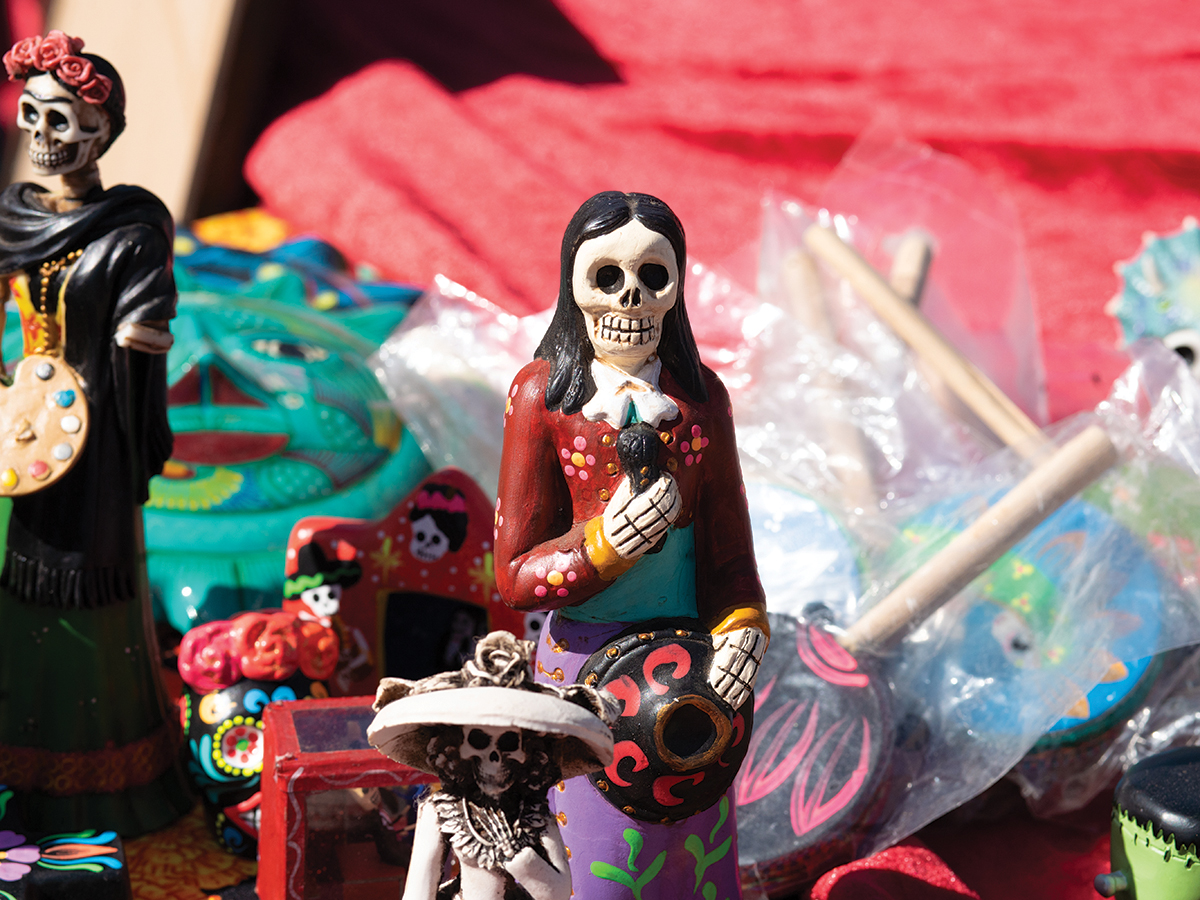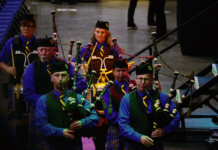
Typically, we see death as a sad part of our lives. In some cultures, however, people celebrate Dia de Los Muertos with optimism and believe that even though their loved ones aren’t with them physically, their memories, legacies and experiences will be remembered by future generations.
Dia de los Muertos, translated to Day of the Dead, is a two day event where families set up altars and place their ancestors’ portraits with their favorite foods and flowers, with the belief that their ancestors’ spirits will come and visit them. Likewise, on Oct. 30, Chicano Student Programs (CSP) held the Dia de Los Muertos event at the Bell Tower, co-sponsored by ASPB and Teatro Quinto Sol.
The event started at 11:30 a.m. and consisted of various Day of the Dead student activities, including sugar skull decorating, face painting and placing sentimental objects on the community altar. The event also hosted bands such as Teocali Tepeyollotl, an Aztec dance group, and Conjunto Tenocelomeh, a group that, according to their website, focuses on “preserving folk music and dance traditions of southern Veracruz.”
The event started off with the entrance of the Aztec dancers on UCR’s campus. Their performance opened with the pounding of a drum; they danced to the rhythm as Aztec bells rattled, which mimicked the sound of rain.
Juan Soria, a third year double majoring in Spanish and business, is a member of Teatro Quinto Sol who attended the event and explained the purpose of the Aztec dancers. “When the Aztec dancers first entered and walked around the campus they were blessing the campus and everyone on it,” stated Soria.
One student organization, Movimiento Estudiantil Chicanx de Aztlan (MEChA) de UCR, is a student organization that focuses on activism and social and political issues. Valeria Moreno, a third-year sociology major and the president of MEChA de UCR, came out with other club members to the Dia de Los Muertos event with portraits of deceased activists.
“Dia de Los Muertos is an indigenous event that usually happens in Oaxaca and southern Mexico. It’s been more mainstream in all of Mexico, because of films such as ‘Coco,’” said Moreno. “For our reasons, we wanted to honor activists that have passed away that we respect and honor. The decorations we put out are mainly for aesthetic reasons, but if you see the altar the Chicano Student Programs put out, theirs is more traditional.”
The community altar had multiple portraits, different colored cloths and marigold flowers. Moreno further commented on the community altar, stating, “The community altar has food and ‘cempasuchiles,’ the marigold flowers that symbolize a pathway for ancestors to find their way back. Dia de Los Muertos is not a mourning event, it’s a celebration of death. We imagine our ancestors coming back to visit us and eat the food we put out.”
Litzy Guzman, a third-year gender and sexuality studies, further explained that, “Anyone is free to pay their respects, or place an item that reminds them of someone they’ve lost.”
Students were also able to get their faces painted to resemble the deceased on Dia de los Muertos. They first painted their face with a white base and unlike the skulls we see on Halloween, they are decorated with flower patterns and other colorful designs. Soria shared his interpretation; “My face is only painted half. The one half represents the living and the other half, which is painted, represents the dead. It’s very fun since you can choose whatever design you like.”
Similarly, one of the activities set up for students were decorating sugar skulls, which are placed on altars as offerings to the dead. Many students hovered over these white, glistening craniums, and were able to decorate it with brightly colored icing.
Ashley Diaz, a third year double major in Spanish and education, has been a member of Teatro Quinto Sol for three years. Diaz elaborated on the meaning of the event, saying, “The Aztec dancers are dancing in celebration of the altars, which also show the appreciation and remembrance of our ancestors.”
Throughout the event, students gathered around the altars, some with their faces painted, others with decorated sugar skulls, whilst the performance groups performed their cultural tunes and dances. The event concluded at 2 p.m., but the celebration does not end there; CSP will also host a Semana de la Mujer during winter quarter and a Cinco de Mayo celebration during the spring quarter.







